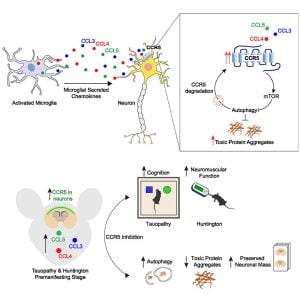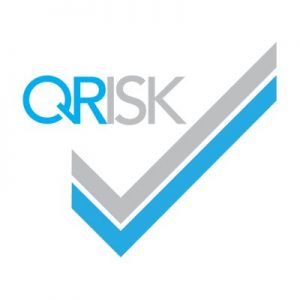A Fresh Look at an Old Ally:
Mirtazapine for Insomnia in the Older Adult
(7.5mg superior than 15mg)
https://doi.org/10.1093/ageing/afaf050
1. Why This Conversation Won’t Go Away
Anyone running a geriatric clinic knows the nightly battle cry: “Doctor, I just can’t sleep.” Benzodiazepines and so-called “Z-drugs” remain common fixes, yet both families bring cognitive haze, falls, and dependency. For years clinicians have quietly pivoted to low-dose mirtazapine—an antidepressant whose antihistaminic and serotonergic blockade leaves most patients yawning within the hour. Until now, hard data were scarce. The MIRAGE trial, published 26 March 2025, finally puts numbers behind this off-label ritual.
2. Trial in One Breath
Design: single-centre, double-blind, randomized, placebo-controlled
Population: 60 community-dwelling adults ≥ 65 y with chronic insomnia (per ICSD-3)
Intervention: mirtazapine 7.5 mg nightly vs identical placebo for 28 days
Primary endpoint: change in Insomnia Severity Index (ISI) from baseline to day 28
Key safety endpoints: any adverse event (AE) and AEs causing discontinuation
3. Efficacy: More than a Sedative Fog
After four weeks, ISI scores fell by a mean 6.5 points in the mirtazapine arm versus 2.9 with placebo (p = 0.003). In practical terms, roughly half the treated patients slid from the “clinical insomnia” range into the “sub-threshold” zone. Subjective reports mirrored the index: wake-after-sleep-onset shortened, total sleep time lengthened, and sleep efficiency nudged upward.
Take-home: At 7.5 mg, mirtazapine delivers a clinically meaningful, moderate-to-large improvement—something cognitive behavioural therapy matches but few pills can boast in this age group.
4. Safety: The Price of a Quiet Night
No severe AEs surfaced, but tolerability was not trivial. Six of thirty mirtazapine recipients (20 %) quit early because of side-effects—primarily morning grogginess, dizziness, and next-day confusion—versus one in the placebo cohort. Nobody fell or fractured, yet the signal reminds us: histamine blockade plus age-related pharmacokinetics equals prolonged hangover.
5. Clinical Pearl—Dose Matters More Than You Think
Why 7.5 mg? At this level, α2-adrenergic auto-receptors are only partially blocked, while H1 and 5-HT2A/C antagonism dominates—key for sleep promotion. Climbing to 15 mg or 30 mg may paradoxically lift noradrenergic tone and lighten sedation, but also raises metabolic baggage (weight gain, lipids). For insomnia, start low, stay low.
6. Where Does MIRAGE Fit into the Landscape?
| Factor | Mirtazapine 7.5 mg | Z-Drugs | Low-dose Doxepin |
|---|---|---|---|
| Evidence in ≥ 65 y | Now RCT-supported | Sparse, mostly extrapolated | One pivotal RCT |
| Cognitive impact | Mild, transient | Moderate | Minimal |
| Fall risk | Possible (orthostasis) | Documented | Minimal |
| Typical half-life | 20–40 h | 1–7 h | 15 h |
| Insurance coverage (UK)* | Generic | Generic | Branded (high-cost) |
*Formulary differences apply; check local guidance.
7. Limitations Worth a Minute of Skepticism
- Single centre – practice patterns and patient profiles may differ outside an academic geriatric clinic.
- Short intervention – 28 days answers “can it work?”, not “does it keep working?”.
- Subjective sleep metrics – polysomnography was not employed; misperception of sleep may inflate gains.
- Modest N – the confidence interval, though statistically tight, still leaves room for over- or under-estimation.
8. Putting It into Practice—A Mini Algorithm
- First-line remains CBT-I. Refer whenever feasible.
- Rule out mimics. Pain, nocturia, REM behaviour disorder, OSA.
- If pharmacotherapy is unavoidable:
- Start mirtazapine 7.5 mg HS.
- Reassess after two weeks (ISI ≥ 6-point drop is a “response”).
- At four weeks, taper off if ineffective; continue up to three months if benefit outweighs sedation.
- Monitor weight, orthostatic BP, and cognition at each visit.
- Document taper plan to minimise long-term, off-label drift.
9. Future Directions—Beyond the Mirage
- Long-range outcomes: Does the ISI advantage persist at six or twelve months?
- Objective sleep metrics: Actigraphy or at-home EEG could clarify true sleep architecture effects.
- Frailty-stratified safety: Are discontinuation rates higher in prefrail or sarcopenic elders?
- Comparative head-to-head: How does mirtazapine fare against low-dose doxepin or lemborexant in this cohort?
10. Bottom Line for the 17:00 Ward Round
For older adults wrestling with chronic insomnia, low-dose mirtazapine now carries randomized evidence of benefit, shaving roughly 6–7 ISI points over four weeks. Yet one in five may abandon therapy owing to next-day somnolence or dizziness. Use it prudently, monitor closely, and remember: sedative is not synonymous with benign.
ClinicalTrials.gov Identifier NCT05247697 — Published 26 March 2025.


